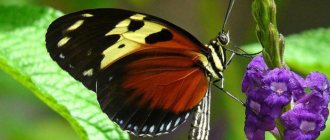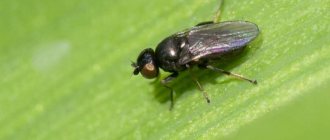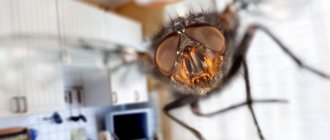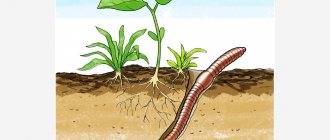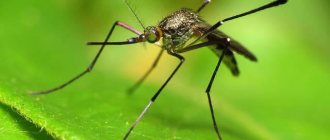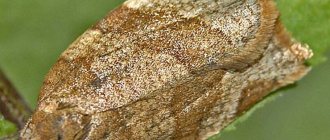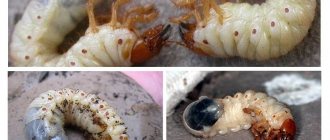The butterfly has always been considered a symbol of love and weightlessness. However, not all representatives are so harmless and beautiful. The moth is a butterfly that is a pest. Under favorable conditions, the individual begins to actively reproduce. There is a possibility of crop destruction.
The moth can cause serious damage and is a dangerous pest.
Moths attack both short and tall plants. It is the caterpillars that pose a danger to garden and garden plants. The only role of butterflies is to reproduce and create a new generation of pests. The moth family includes more than 20,000 species.
What a short description
The moth can have a wingspan of up to 6 cm. The body of the butterfly is weak, and the wings are wide and delicate. Among the representatives there is an individual with a dense body and underdeveloped wings. Insects have no eyes.
The insect has a proboscis that is thin and curved. The paws are thin. Mostly butterflies are nocturnal. The moth's flight is uneven. The wings in a calm state are folded like a house. Females often lack wings entirely.
At the caterpillar stage, the moth has a naked body. The larva is long and thin. The 2 front legs are underdeveloped. For this reason, the insect can be recognized by its strange movement. The caterpillar has developed muscles and is able to lift part of its body.
Caterpillars are naked and long
The pupae are smooth and do not have a cocoon. The color is gray, brown, green or yellow. Insects overwinter in the bark of trees, cobwebs, and the ground. Often moths also endure cold weather directly on trees, between the branches.
Adult moths at the butterfly stage are nocturnal. They feed on nectar. Some subspecies do not need food at all. After mating, females lay eggs on trees, namely buds, branches or leaves.
After hatching from the eggs, the insect eats a lot. The moth is polyphagous and voracious.
The moth is a leaf- and pine-eating pest. After insect damage, the tree weakens. In winter, the insect can die or produce much less harvest in the future. Resistance to negative factors decreases.
From time to time, moths are able to reproduce en masse, which will lead to an entire invasion. The consequences of the negative influence will persist for several more years. In most cases, female moths do not fly.
Caterpillars cause harm because they eat leaves on trees
This is due to the underdevelopment of the wings. A perfect nervous system helps the insect navigate in space. The butterfly, which has no eyes, analyzes the vibrations of sound waves. Individuals are also able to communicate with each other.
The butterfly has an inconspicuous color and is able to completely merge with the bark of a tree. This is a kind of camouflage from enemies.
What stages does it go through?
The development of the moth includes several stages, each of which is described in the table.
| Imago | The butterfly is small or medium in size. The body is slim. Some individuals are able to curl up and resemble a dry leaf. Unlike females, males always have developed wings and can fly. |
| Egg | The egg has an oval shape. The shell is oblong. Color changes as it develops. |
| Larva | The caterpillar has no villi. When moving, the back of the body is pulled towards the front. The insect has a peculiar color that helps to camouflage itself. The larvae camouflage themselves under foliage or tree bark. |
| Doll | At a certain point, the caterpillar begins to pupate. The insect is in the ground at this time and can either have a cocoon or be without it. The pupae are green, yellow or gray in color. |
Individuals go through all stages of development. Insects are capable of dying prematurely only under unfavorable conditions or after interacting with enemies.
From this video you will learn more about the caterpillars of this butterfly:
Prevention of moths
To prevent the moth from ruining your harvest, you need to start fighting it in the fall: collect fallen leaves under the plants and burn them, then dig up the soil in the trunk circles of bushes and trees. From the beginning of the season, carry out two preventive treatments of the garden with a solution of Karbofos or another preparation of a similar effect: the first - before the buds begin to bloom, the second - after flowering. When fruits appear on the plant, it is advisable to carry out treatments only with folk remedies.
The moth is a family of small butterflies, which includes 15 thousand species. This family got its name because of the way the caterpillars move.
During movement, the caterpillar bends, while moving its hind legs towards the front ones, when it is secured with its hind legs, the front part of the body is thrown forward.
So she alternates movements that are similar to measuring with long spans. Moth caterpillars can move at quite high speeds.
How to cope with winter
Wintering directly depends on the type of insect. Moths can be divided into 2 types:
- 1 – overwinter as larval eggs at the base of the buds;
- 2- survive winter on the surface of the earth in the form of pupae.
Insects that overwinter as eggs are born in early spring. After the end of flowering, the trees begin to pupate on the surface of the earth. The butterfly season begins in September.
Insects that overwinter in pupae begin to fly in May. Over time, the individual lays eggs. Caterpillars feed on leaves. At the beginning of autumn they leave for the winter.
Moths survive the winter without problems, since the cold does not kill the insect.
What types of insects exist
The table shows the main varieties of moth.
| Sosnovaya | It has a color that makes the insect invisible against the background of pine bark. Caterpillars feed on needles. If left untreated, they can completely destroy entire hectares of pine trees in a short period of time. |
| Berezovaya | The representative has changed its color over time. The individual learned to produce a black pigment to look more like birch bark, which darkened due to soot settling. The insect almost completely merges with the trunk. At the caterpillar stage it has a green body. |
| Black | The wingspan does not exceed 1.5 cm. The body and wings are black. Only on the front wings there is a thin white border. The caterpillars are green. They feed on ground chestnuts. In the absence of this plant, they change their taste preferences. |
| The caterpillars are green. They feed on ground chestnuts. In the absence of this plant, they change their taste preferences. | |
| Fir | The wings are gray in color. The caterpillar looks like a broken branch. The larvae feed on pine needles. |
| Gooseberry | The insect has a bright color. There are yellowish fibers on the body. At the caterpillar stage it feeds on gooseberries, currants, plums, apricots, and apples. The moth wraps damaged areas in a web and then pupates there. |
| Winter | Has an unsaturated color. The wings are gray with transverse dark lines. The moth eats the seeds and buds from the inside. Eggs are laid in autumn and remain in the bark all winter. |
| Ripped off | The color is cream, brown or green. There are wavy lines on the wings. The insect leaves torn marks on the leaves. |
| Green | One of the largest individuals from the family. The wingspan is up to 6 cm. After pupation, the butterflies are green. Lives in the forests of Europe. The insect feeds on hazel and birch leaves. The length of the caterpillar is 2.5-3 cm. Wintering is carried out underground. |
| mulberry | Females do not have wings. Only males can fly. The caterpillars eat the buds and leaves of mulberries and other fruit trees. |
In total, the family includes more than 20,000 moths. All of them are pests and pose a danger to fruit trees.
There are several species of this butterfly
Varieties of caterpillar
There are more than 23,000 species of moths. The most common in Russia and the CIS countries are:
- Winter moth.
A transparent caterpillar with a greenish tint, which has one dark longitudinal stripe along the back and three lighter lateral stripes. It has five growth stages and four molts. It pupates in June in the soil under a tree, and in August butterflies emerge from the pupa, which cannot fly and climb up the tree. - Pine. It has a green color and five lateral white lines. Pupates in late autumn in the litter under a tree.
- Gooseberry
moth .
Light caterpillar with yellow and black splashes. - Ripped off. It has a brown or yellow color. A lateral yellow stripe runs down the body, and brown spots may be present.
Surveyor:
How harmful
Representatives of moths are leaf-eaters and pine-eaters. Insects pose a serious threat to plant growth and development. Individuals eat vegetative and generative organs of woody plants and shrubs.
Insect infestation leads to:
- reduction in yield;
- deterioration of fruit characteristics;
- reducing resistance to external influences and diseases.
If left untreated, the insect can lead to the complete disappearance of leaves on the tree. Gradually, the plant will become completely incapable of continuing growth, much less flowering.
Measures to combat land surveyor
The winter one is considered the most harmful of all species for gardeners. Every 6-8 years she experiences a peak in fertility. Outbreaks of frenzied reproduction can last 2-3 years.
The most effective method is digging up the tree trunk circle in the autumn with a meticulous inspection of each shovel of soil to identify pupae. This action needs to be carried out every 2-3 weeks. But that is not all:
- Treat the crowns of trees and shrubs with oleocuprite and DNOC . Early in spring, before the snow melts. You can use drug No. 30.
- Spray the plants before flowering with Karbofos .
- Treat with chemicals.
- Hanging the hunting belt on glue. It is attached directly to the trunks at a height of 20-30 cm from the ground. When a butterfly rises up to the crown, it will definitely fall into it. In the fall, the trap is removed and burned.
Birds are the best helpers when exterminating caterpillars . Feeding sparrows, tits, and starlings will do good service to garden plants.
To combat pine moths, the plant layer under the trees is raked in the fall. This leads to the death of the bulk of the caterpillars. Grazing pigs in these places will double the efficiency. Pigs love the larvae of these insects.
It is easier to destroy the gooseberry caterpillar mechanically, that is, by picking it by hand and burning it. The color of the larvae makes them clearly visible on the bush. Spring spraying with arsenic solution is possible.
The most effective method for stripping is adhesive belts.
The fight against moths is a prerequisite for maintaining the health and abundance of forest and garden plantings. After all, this insect is prone to outbreaks of mass reproduction, which means it can cause enormous damage in a short period.
What interesting facts are associated with the moth?
Many interesting facts are often associated with butterflies. Moth is no exception. Many years ago, the birch moth had light colored wings with spots. This was necessary for complete camouflage on the tree. In ecologically clean places, the color remained unchanged.
In polluted areas, where soot settles on birch trees, moths have become darker. The butterflies adapted to the new conditions and were forced to change in order to successfully camouflage.
Birch moth may have a darker color
Some moth caterpillars hide themselves using flower petals, which they attach with silk thread. The insect constantly replaces old flowers and leaves with new ones.
How the fight happens
Control should begin immediately after pests are detected. The most harmless methods are mechanical. Gardeners are recommended:
- In the morning, caterpillars are shaken off the trees and then destroyed;
- Sticky belts are placed on trees in early spring to prevent egg laying;
- collect and destroy fallen leaves.
Collecting insects is convenient in the early morning or late evening. The use of agrochemical methods is also permitted:
- regular digging of the soil;
- regular loosening of the soil;
- moss removal;
- whitewashing tree trunks.
One of the control methods is bleaching the trunks.
The use of chemicals is possible only as a last resort, when the number of insects has increased significantly. The processing is complex and can be combined with other methods.
Biological enemies are used less frequently. To do this, insects are released into the garden to destroy the moth. The method is no less effective than the others.
How to get rid of moth
Fighting the moth
It is necessary to combat moths using a combination of agrotechnical, mechanical, chemical and biological methods. To agrotechnical methods
struggles include:
- regular inspection of plants for pests;
- loosening the soil in the trunk circles of trees and shrubs from early spring to the end of April, and then from the first ten days of September until the onset of frost;
- digging up the soil around trees in summer and autumn;
- mechanical removal of dead bark and moss from trees;
- whitewashing of trees in early March and October.
Mechanical control measures
- the most labor-intensive, but also the safest - include:
- morning collection of caterpillars by hand or shaking them onto the litter and subsequent destruction;
- use of adhesive belts against insects;
- collection and destruction of spider nests on bushes and trees and plant debris in their tree trunks.
Chemical method
involves treating fruit storage facilities, plants, and containers with pyrethroids, organophosphorus compounds and neonicotinoids.
And the biological method
of combating moths means attracting their natural enemies to the garden, which are ichneumon flies and tahina flies, for which phacelia, clover, ornamental onions and sunflowers are planted on the site, as well as spraying trees and shrubs with biological pesticides.
In the photo: Garden pest moth
Remedies for moths (drugs)
It is advisable to use insecticidal preparations against moths for preventive spraying of the garden in the spring. If there is a need to treat plants during the season, then in the case of even a very large number of pests, only preparations of biological origin are used. Preventive spraying of fruit trees and berry bushes is carried out before flowering begins. The following drugs are used for treatment:
- Akarin is an insectoacaricide, a biological preparation of contact-intestinal action, effective against a complex of pests;
- Karbofos is a broad-spectrum insecticide and acaricide belonging to the class of organophosphorus compounds and used for the rapid and complete destruction of sucking and leaf-eating insect pests;
- Zolon is a contact-intestinal insecticide and acaricide that remains highly effective even at low air temperatures. However, the drug is highly toxic to warm-blooded animals;
- Kinmiks is a contact-intestinal insecticide for the control of gnawing and sucking pests;
- Decis is a contact-intestinal insecticide, part of the group of synthetic peritroids and used to control sucking and leaf-eating pests;
- Fitoverm is an insectoacaricide of biological origin with enteric contact action to protect plants from pests in open and closed ground;
- Bitoxibacillin is a biological insectoacaricide for protecting plants from pests. The period for the last treatment with the drug is five days before harvesting any crops and 10 days before harvesting medicinal plants;
- Lepidocide is a highly effective insecticidal biological preparation with intestinal action that can be used at any stage of plant development;
- Dendrobacillin is an insecticide recommended for spraying plants during the growing season against leaf-boring and other pests. The last treatment period is five days before harvesting any crops and 10 days before harvesting medicinal plants.
